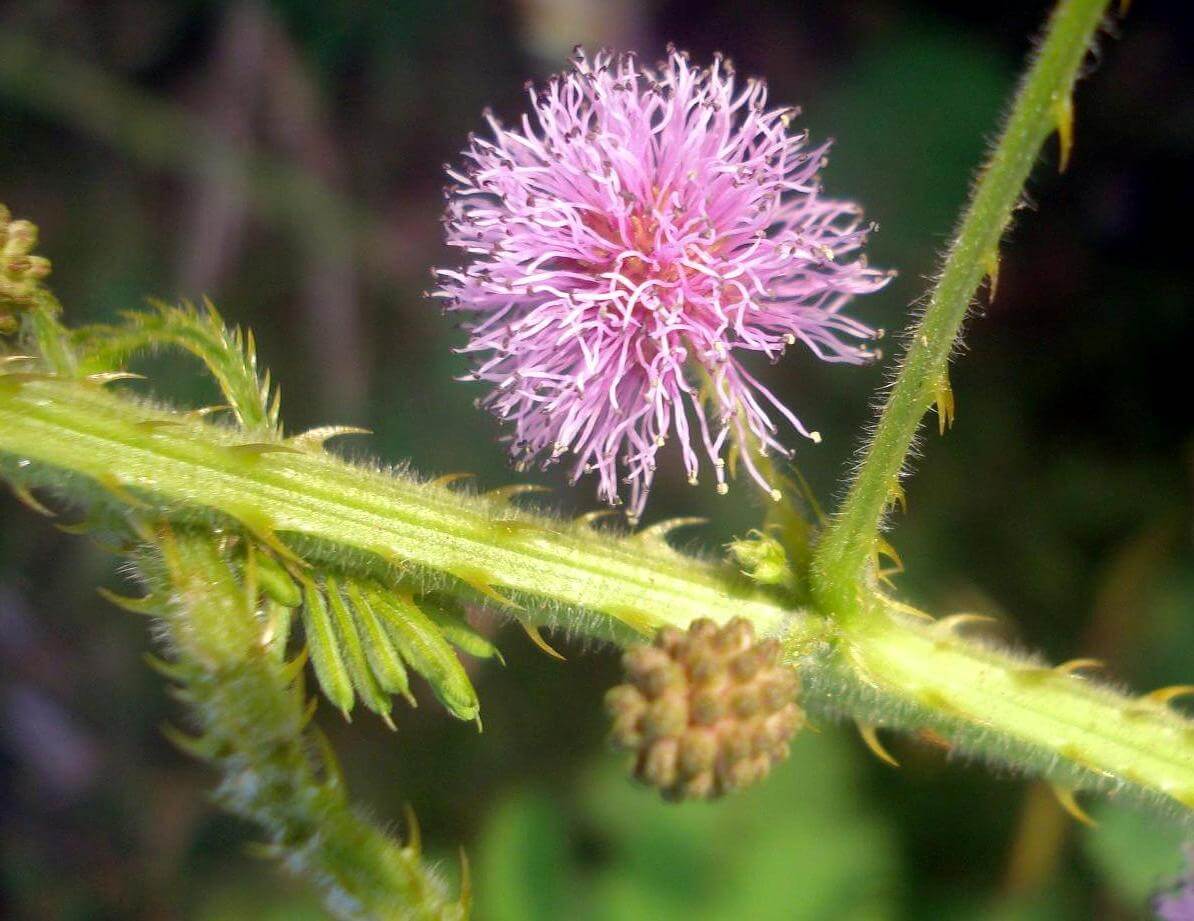Researchers Say We Need a Plan to Combat This Crazy Toxic Weed
It’s spreading quickly through eastern and southern Africa.

Of all the invasive plants out there, it’s the chokers—the ones that strangle native plants—which might be the most viscerally scary.
Among those is one not well known in North America: Mimosa diplotricha, commonly known as the giant sensitive plant. Researchers at the Centre for Agriculture and Bioscience International (CABI), a nonprofit focusing on agricultural and environmental issues in the developing world, studied the spread of this plant in eastern and southern Africa, and say there is an “urgent need” for some kind of control strategy.
The giant sensitive plant is a large, bushy, thorny shrub native to Central and South America; it gets its name because its leaves, if touched, will suddenly curl up as if recoiling from stimulus. It produces long stems full of extremely sharp thorns, along with lots and lots of seedpods, meaning that it reproduces quickly and efficiently. It was first found in the tropical Pacific in the early- to mid-1900s; by the 1970s, it was considered a serious weed in Indonesia, the Philippines, Australia, Taiwan, Fiji, and elsewhere.
The problem with this plant is that it grows huge and sprawling, and spreads quickly throughout farms, fields, and vacant land, according to this new study. It has had a hugely negative effect on the yield of crops, including some staple or otherwise vital crops like sugarcane and cassava, crowding out the crops. It also climbs and smothers larger plants like palm trees, reminiscent of kudzu. It’s been shown to have “serious negative impacts” on farms growing tea, coffee, pineapple, coconut, and rubber.
It’s also extremely difficult and sometimes dangerous to eradicate. The thorns are very sharp and can injure farmworkers who try to slice through it. All parts of the plant are believed to be toxic to most livestock, including cattle, sheep, and hogs, and it reduces grazing land for those animals. Herbicides aren’t particularly effective, requiring repeated doses, and in much of the areas where it’s a real problem, repeated herbicide use isn’t affordable. Slashing and burning has been found to be the most effective, but can be disastrous for the environment.
The new study found that the giant sensitive plant is widespread and common throughout parts of Ethiopia, Tanzania, Malawi, Uganda, and Rwandi, with sightings further south and east in other countries. People surveyed in those areas reported that the invasive plant has made it difficult to move either people or livestock, and that it reduced native grasses, trees, and shrubs. Over half had to pay workers to somehow get rid of the plant.
The study finds that there needs to be work to contain and combat the giant sensitive plant’s spread, but that there isn’t an ideal solution. Herbicides aren’t approved in most countries for use on this weed and are expensive besides. Burning has major environmental downsides. Some, including the United States government (the plant is found in territories Guam and the Northern Mariana Islands), are looking into biological controls, like small lice-like insects that feed on the plants. “Mimosa diplotricha is already present in a number of countries in eastern and southern Africa and likely to expand its range, exacerbating biodiversity loss and further reducing crop yields and rangeland productivity,” the researchers write.https://modernfarmer.com/2020/08/researchers-say-we-need-a-plan-to-combat-this-crazy-toxic-weed/

No comments:
Post a Comment